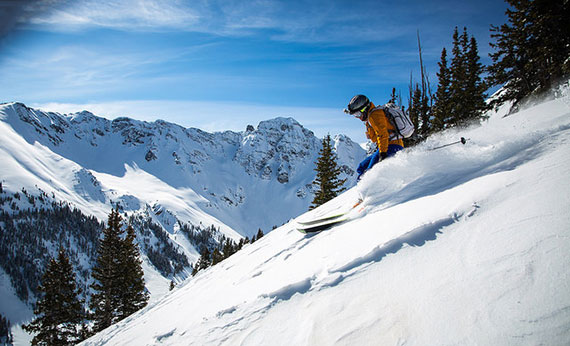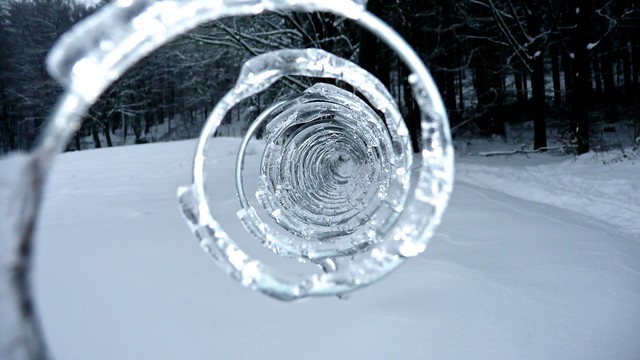Most SLRs cope remarkably well with freezing temperatures. I’ve had no problem using Canon EOS DSLR cameras below zero for weeks on end, often down to -20°C and in extreme down to -30°C. This article is for those trying to keep such a camera going under expedition conditions, such as an icecap crossing or mountaineering expedition in the arctic (i.e., no power sockets, adverse weather, sleeping in tents on the ice). However, much of the advice also applies to using a camera in cold conditions generally.

Photo by Zach Dischner; ISO 100, f/3.2, 1/4000-second exposure.
The two main technical problems to overcome:
1. Condensation
Condensation forms when moving from a cold to a warmer environment, you don’t need to worry about damage to your camera moving from a warmer to a colder environment. Even in arctic conditions the temperature inside a tent is often well above zero yet well below zero in the shade. this means there is often a temperature gradient when bringing a camera into a tent which leads to condensation forming. Condensation on the front element or view finder is an inconvenience, but condensation on the electronics can give permanent malfunction, and condensation in the inside glass elements can write off the camera for hours or days until the lens totally dries out.
2. Reduced Battery Efficiency
Batteries are many times less efficient in cold weather due to the reduced speed of the chemical reaction that powers them.

“frost on the windshield” captured by liz west
Tips for Reducing Condensation
1. Place camera in plastic bag
The camera should be placed inside a polypropylene freezer bag, loosely knotted or twisted and then placed back inside the camera bag. You don’t want to put a waterproof bag around the entire camera bag as any moisture in the camera bag would then condense on the camera body. Ziploc bags and Ortlieb style dry bags may sound better, but they often don’t fit neatly inside the camera bag and are much heavier and more expensive. The freezer bag also has the major advantage that you can stuff it below your camera in the bag when not in use, but you need to take spares for when it gets damaged.
2. Use camera bag insulation
The padding on most camera bags (especially the holster style common on expeditions) offers some insulation value, which can reduce the dramatic temperature change when moving from environments of different temperatures.
3. Try and warm up slowly
If there are environments of differing temperatures try to make the warm up process for the camera as gradual as possible.
4. Avoid breathing on the lens
Obvious maybe, but if you need to clean the lens, just use a camera cloth to avoid ice forming.

“Ice Spiral” captured by Samuel John
Tips for Dealing with Reduced Battery Efficiency
1. Carry multiple batteries
As a rough guide plan to take 2 to 3 times the number of batteries you’d need for equivalent shooting in temperate climates. My personal strategy is to take multiple batteries for an extended trip in the wilderness rather than deal with the uncertainties of solar chargers. This makes planning easy, as one can ration a battery to last a given amount of time.
2. Warm batteries by keeping close to skin
Carry your spare close to your skin so your body can warm them. An apparently dead battery can be given more life by warming, so on very cold days you may find yourself rotating batteries in this way.
3. Adjust shooting style to conserve power
Accept that you’ll get less out of your batteries and adjust your shooting style to conserve power. The biggest thing you can do is turn off after shot preview and minimize how much you preview your images. Additional power saving tips to get the most out of your battery are to turn off image stabilization, don’t use flash, and minimize half-press pre-focusing.
About the Author:
Quintin Lake (blog.quintinlake.com/) is an architectural and fine art photographer based in Cheltenham with strong links in London. He’s available for work worldwide.
Like This Article?
Don't Miss The Next One!
Join over 100,000 photographers of all experience levels who receive our free photography tips and articles to stay current:






Thanks for the information.
I was wondering if I also needed to put all the lenses in my pack in a plastic bag to prevent condensation on them as well as the camera?
All of these are very good suggestions. In addition if my camera is sitting on the tripod for a while I will place a wool cap over the camera body to keep it warm.
I am wanting to donate a digital camera with a good lens to an artist in Nunavut. Is there any camera that will survive minus 30 celsius?
Thanks for the information – new to photography and going on holiday to Finland